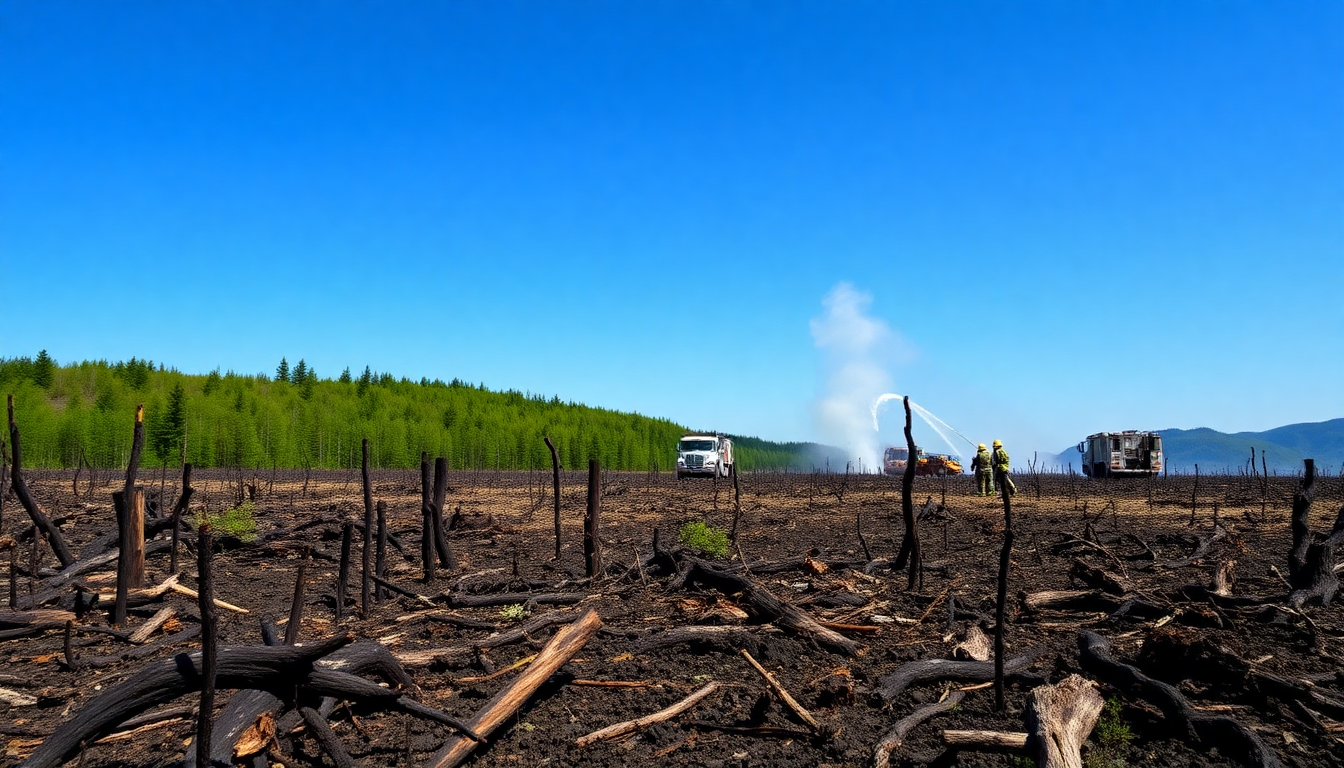Table of Contents
The wildfire situation in Nova Scotia and surrounding areas has taken a turn for the worse, causing significant concern among residents and officials. Reports about the expanding Long Lake wildfire, which has already led to evacuations, highlight the urgent need to grasp the dynamics of this crisis, the challenges faced by firefighters, and the broader implications for affected communities.
In this article, we’ll explore these critical issues, shining a light on firefighting efforts, environmental conditions, and what the future might hold for those impacted by this disaster.
Current Wildfire Landscape in Nova Scotia
The Long Lake wildfire has now grown to cover about 11 square kilometers and is moving closer to West Dalhousie Road in Annapolis County.
With dry conditions fueling its spread, forest protection manager Scott Tingley didn’t mince words: “It’s very, very dry.” The situation is serious enough that local authorities have declared a state of emergency, leading to the evacuation of around 100 households in heavily wooded areas.
How do you prepare for a crisis like this when nature seems to be against you?
Meanwhile, in Newfoundland and Labrador, cooler temperatures and lower wind speeds have brought some relief to firefighters, with the largest wildfire there stabilizing at roughly 95 square kilometers.
This contrast underscores just how unpredictable wildfires can be, with environmental factors playing a crucial role in firefighting success.
Environmental Factors and Firefighting Challenges
Nova Scotia is currently grappling with drought-like conditions and extreme heat, both of which are intensifying the fire risks.
Although Environment Canada forecasts some rain, experts like Jim Rudderham from Nova Scotia’s forest protection are skeptical. He points out that the rain needs to be steady and prolonged to soak into the hardened ground effectively. With the wildfire encroaching on populated areas, ensuring community safety has never been more urgent.
Firefighters are pulling out all the stops, employing helicopters and ground crews from neighboring provinces to tackle the flames. These collaborative efforts emphasize the importance of regional support in dealing with natural disasters. However, the situation is complicated further by weather anomalies, like the approaching Hurricane Erin, which could disrupt firefighting efforts and increase the risks of coastal flooding and rip currents. How do you prepare for something that seems to change at a moment’s notice?
Looking Ahead: Prospects and Community Safety
As the wildfire situation continues to evolve, it’s vital for local residents and officials to stay alert and ready for potential evacuations or safety protocols. The interaction between weather patterns, community preparedness, and firefighting resources will significantly influence the immediate future of the affected areas. Are we doing enough to stay ahead of this crisis?
Prime Minister Mark Carney’s recognition of the Canadian Armed Forces’ role in wildfire response efforts highlights how disaster management is a team effort. For communities, maintaining open communication with authorities and staying informed about risks and safety measures is crucial. While the current conditions might seem overwhelming, proactive planning and community resilience can significantly lessen the impact of such natural disasters. After all, isn’t it better to be prepared than to react when it’s too late?





